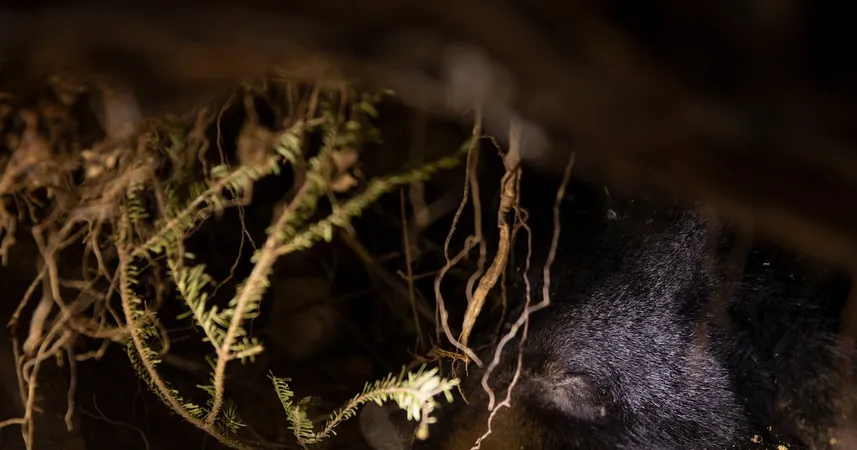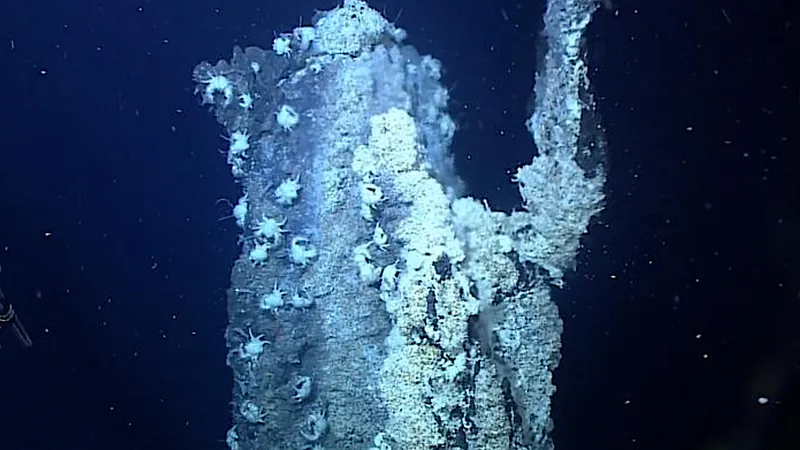
Unlocking the Secrets of Hibernating Bears: A Breakthrough for Human Health!
2025-08-06
Author: Rajesh
What Can Grizzly Bears Teach Us?
Every spring, grizzly bears emerge from their winter slumber, having survived months without food or movement. They wake up rejuvenated, with fully intact muscles and organs, as if the metabolic stress of hibernation had never affected them. This incredible natural phenomenon raises a tantalizing question: Could humans harness similar biological resilience?
A Revolutionary Discovery at the University of Utah
Researchers at the University of Utah believe they may have found the answer. Their groundbreaking studies suggest that the genetic toolkit allowing bears to thrive during hibernation might also be lurking within our own DNA, waiting to be activated. By unlocking these secrets, we could revolutionize treatments for chronic conditions like Type 2 diabetes, strokes, and Alzheimer’s disease.
Dr. Susan Steinwand, the lead author of one of the studies, stated, "Humans already possess the genetic framework needed for hibernation; we just need to identify the control switches that activate these traits." The research, published in the journal Science, indicates that certain genetic switches associated with hibernation may be dormant in humans.
The DNA Connection: FTO Locus Explored
One of the pivotal focuses of this research was the FTO locus, a well-known genetic risk factor for obesity. Surprisingly, this same area is crucial for hibernating animals to slow their metabolism and endure extreme conditions. By zeroing in on noncoding regions of DNA—those that regulate gene expression—the team discovered "cis-regulatory elements" or CREs, which act like dimmer switches for gene activity.
Dr. Chris Gregg, senior author of the studies, likened the search for these genetic regions to searching for needles in a massive haystack. The findings revealed that altering specific DNA regions in mice affected weight, metabolic rates, and thermal regulation, mimicking the traits seen in hibernating animals. Steinwand remarked, "When we disrupt even one tiny DNA region, it can alter the activity of hundreds of genes, making it a game-changer for metabolic science!"
Potential Medical Revolutions Await!
These exciting discoveries could redefine how we approach metabolic and neurological disorders. Elliott Ferris, a bioinformatician, emphasized, "If we could manipulate our genes to function like hibernators, we might overcome obstacles like Type 2 diabetes just as they rejuvenate from hibernation into a normal metabolic state."
A Parallel Study from Oregon's Innovative Scientists
Meanwhile, researchers at Oregon Health and Science University are investigating how to replicate hibernation-like states in humans. They uncovered a brain mechanism called thermoregulatory inversion, which enables animals to lower their core body temperature without triggering typical responses such as shivering.
Dr. Domenico Tupone elaborated, "This could help the brain and heart require less oxygen during critical moments like strokes. If we can implement this mechanism in humans, we could perfect therapeutic hypothermia, enhancing survival rates during medical emergencies."
A New Frontier in Medicine—Are You Ready?
As researchers continue to unravel the mysteries of hibernation, the aim is not just to assist animals during cold winters but to redefine treatments for diseases, injuries, and aging. Dr. Gregg concluded, "If these hibernation traits are embedded in our own genome, we can learn from hibernators to boost our own health."
The potential applications are staggering—who knows? One day, we might be able to sleep through our own metabolic crises as easily as a bear in its den!





 Brasil (PT)
Brasil (PT)
 Canada (EN)
Canada (EN)
 Chile (ES)
Chile (ES)
 Česko (CS)
Česko (CS)
 대한민국 (KO)
대한민국 (KO)
 España (ES)
España (ES)
 France (FR)
France (FR)
 Hong Kong (EN)
Hong Kong (EN)
 Italia (IT)
Italia (IT)
 日本 (JA)
日本 (JA)
 Magyarország (HU)
Magyarország (HU)
 Norge (NO)
Norge (NO)
 Polska (PL)
Polska (PL)
 Schweiz (DE)
Schweiz (DE)
 Singapore (EN)
Singapore (EN)
 Sverige (SV)
Sverige (SV)
 Suomi (FI)
Suomi (FI)
 Türkiye (TR)
Türkiye (TR)
 الإمارات العربية المتحدة (AR)
الإمارات العربية المتحدة (AR)